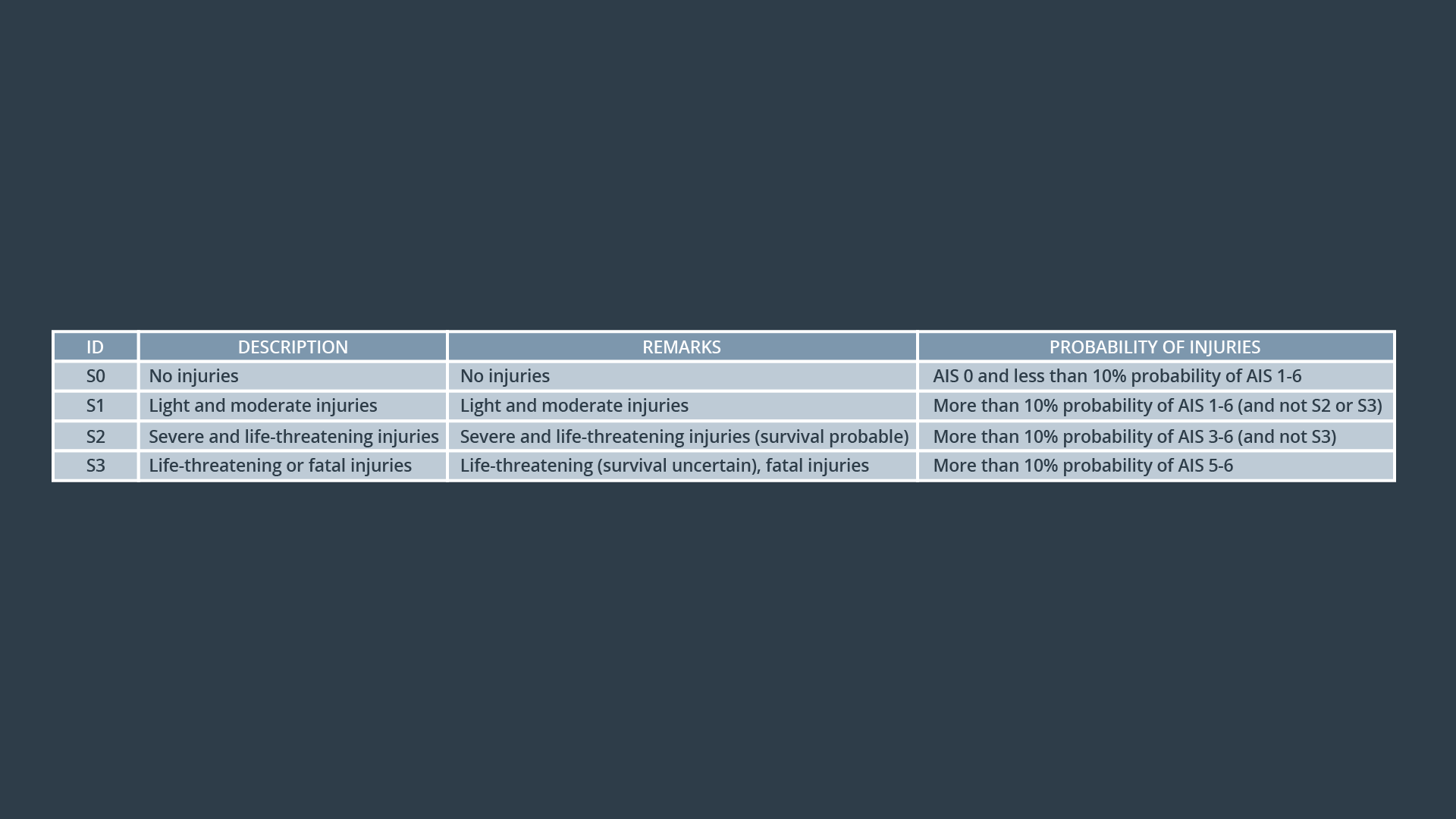08. Risk Assessment, Severity, Exposure, Controllability
Risk Assessment: Severity
L3 14 HARA Risk Assessment, Severity, Exposure, Controllability
Table to Determine Severity

In the last column, you will see that probability of injury involves using a scale called AIS. AIS stands for accident injury scale .
The accident injury scale is published by the Association for the Advancement of Automotive Medicine (AAAM) and contains seven levels: AIS 0 through AIS 6. Here are examples of the injuries associated with each level.
- AIS 0: no injuries
- AIS 1: light injuries such as skin-deep wounds, muscle pains, whiplash
- AIS 2: moderate injuries such as deep flesh wounds
- AIS 3: severe but not life-threatening injuries such as skull fractures without brain injury
- AIS 4: severe injuries that are life-threatening but with probable survivability such as concussion with or without skull fractures with up to 12 hours of unconsciousness
- AIS 5: critical injuries (life-threatening, survival uncertain) such as spinal fractures below the fourth cervical vertebra with damage to the spinal cord
- AIS 6: extremely critical or fatal injuries such as fractures of the cervical vertebrae above the third cervical vertebra with damage to the spinal cord
Note that AIS is provided in the standard as an example. There is no requirement to use AIS and the "Probability of Injuries" field is a suggested guideline, not a strict requirement.
Risk Assessment Exposure
L3 14 Hara Risk Part 2
Table to Determine Exposure

Risk Assessment Controllability
L3 14 L Hara Risk Part 3
Table to Determine Controllability

Lane Keeping Assistance Example Severity, Exposure and Controllability
Here again is the situation we are analyzing for the lane keeping assistance example:
"Normal driving on country roads during normal conditions with high speed (the driver is misusing the lane keeping assistance function as a fully autonomous function)".
Because the driver is traveling at high speed, severity would be S3. The driver is on a country road and misusing the system. That combination probably does not happen often, so we will label the exposure E2.
The malfunction was that the lane keeping assistance was always on and had no time limit, so drivers could take both hands off the wheel. Because hands aren't on the wheel at high speeds, a vehicle accident would not be controllable. We will label this hazardous situation as C3.